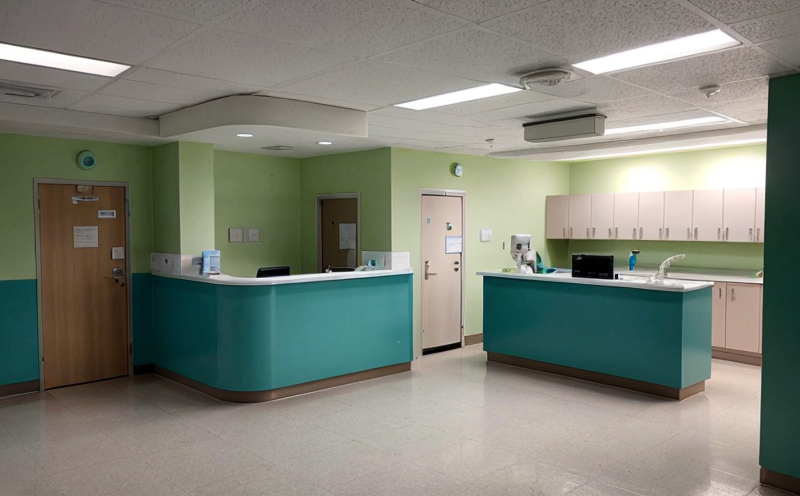ISO 16213 Anaerobic Bacteria Testing in Healthcare Settings
The ISO 16213 standard focuses on the microbiological quality of air and surfaces in healthcare facilities, with a particular emphasis on the presence of anaerobic bacteria. This testing is crucial for ensuring that hospital environments are safe for patients and staff by minimizing the risk of infection from these microorganisms.
Anaerobic bacteria thrive in environments without oxygen, which can include various areas within hospitals such as operating rooms, intensive care units (ICUs), and burn units. These bacteria are particularly dangerous because they can cause serious infections that are difficult to treat with conventional antibiotics. Hospitals must adhere strictly to international standards like ISO 16213 to ensure their facilities meet the highest safety and hygiene standards.
The testing process for anaerobic bacteria involves several critical steps. Specimens are collected using sterile swabs or air sampling devices, depending on the area being tested. The samples are then transferred to media suitable for anaerobic growth, such as thioglycollate broth, which provides an environment free of oxygen. Culturing these samples allows the detection and identification of any anaerobic bacteria present.
The test results are reported according to ISO 16213 criteria, which specify acceptable levels of contamination. Compliance with these standards is essential for maintaining clean and safe healthcare environments. Hospitals that fail to meet these criteria may face significant legal and reputational risks, as well as increased operational costs due to necessary remediation efforts.
Understanding the importance of this test requires a brief overview of anaerobic bacteria's role in hospital settings. Anaerobic bacteria are not only pathogenic but also persist longer on surfaces compared to aerobic bacteria. This persistence makes them a significant challenge for healthcare facilities, especially those dealing with immunocompromised patients or those undergoing surgical procedures.
Compliance with ISO 16213 is particularly important in high-risk areas such as ICUs and operating rooms. In these environments, the risk of infection from anaerobic bacteria is higher due to the invasive nature of treatments and the presence of open wounds. Ensuring that these areas meet the stringent criteria outlined in ISO 16213 helps prevent the spread of infections and protects patient safety.
The testing process can be complex, involving not only the collection of samples but also the careful analysis and interpretation of results. Hospitals must invest in proper training for their staff to ensure they understand the nuances of this testing method. Additionally, laboratories conducting these tests should have state-of-the-art facilities equipped with the necessary instruments and expertise to perform accurate and reliable analyses.
Given the critical nature of healthcare environments, compliance with ISO 16213 is not just a recommended practice but a legal requirement in many countries. Non-compliance can lead to severe consequences, including fines, loss of accreditation, and damage to public trust. Therefore, hospitals must prioritize this testing as part of their overall quality assurance program.
The process of ISO 16213 compliance involves regular monitoring and reporting. This includes not only the results of the tests themselves but also an analysis of trends over time. By regularly assessing the levels of anaerobic bacteria in various parts of the hospital, facilities can identify areas where improvements are needed and implement targeted interventions.
Furthermore, compliance with ISO 16213 is part of a broader effort to promote environmental sustainability within healthcare settings. By reducing contamination and improving hygiene standards, hospitals contribute positively to their communities and the environment as a whole. This holistic approach ensures that every aspect of hospital operations aligns with global best practices.
In conclusion, ISO 16213 anaerobic bacteria testing is essential for maintaining clean and safe healthcare environments. By adhering to this standard, hospitals can protect patient safety, comply with legal requirements, and contribute to environmental sustainability. The rigorous testing process, coupled with regular monitoring and reporting, ensures that facilities remain at the forefront of quality assurance.
Eurolab Advantages
EuroLab stands out in the field of ISO 16213 compliance through its comprehensive approach to healthcare microbiology testing. Our team of experts possesses extensive knowledge and experience in conducting these tests, ensuring accuracy and reliability.
We offer a wide range of services tailored to meet the specific needs of hospitals and other healthcare facilities. From initial consultation on setting up a robust quality assurance program to ongoing support for maintaining compliance with ISO 16213 standards, EuroLab provides全方位支持





